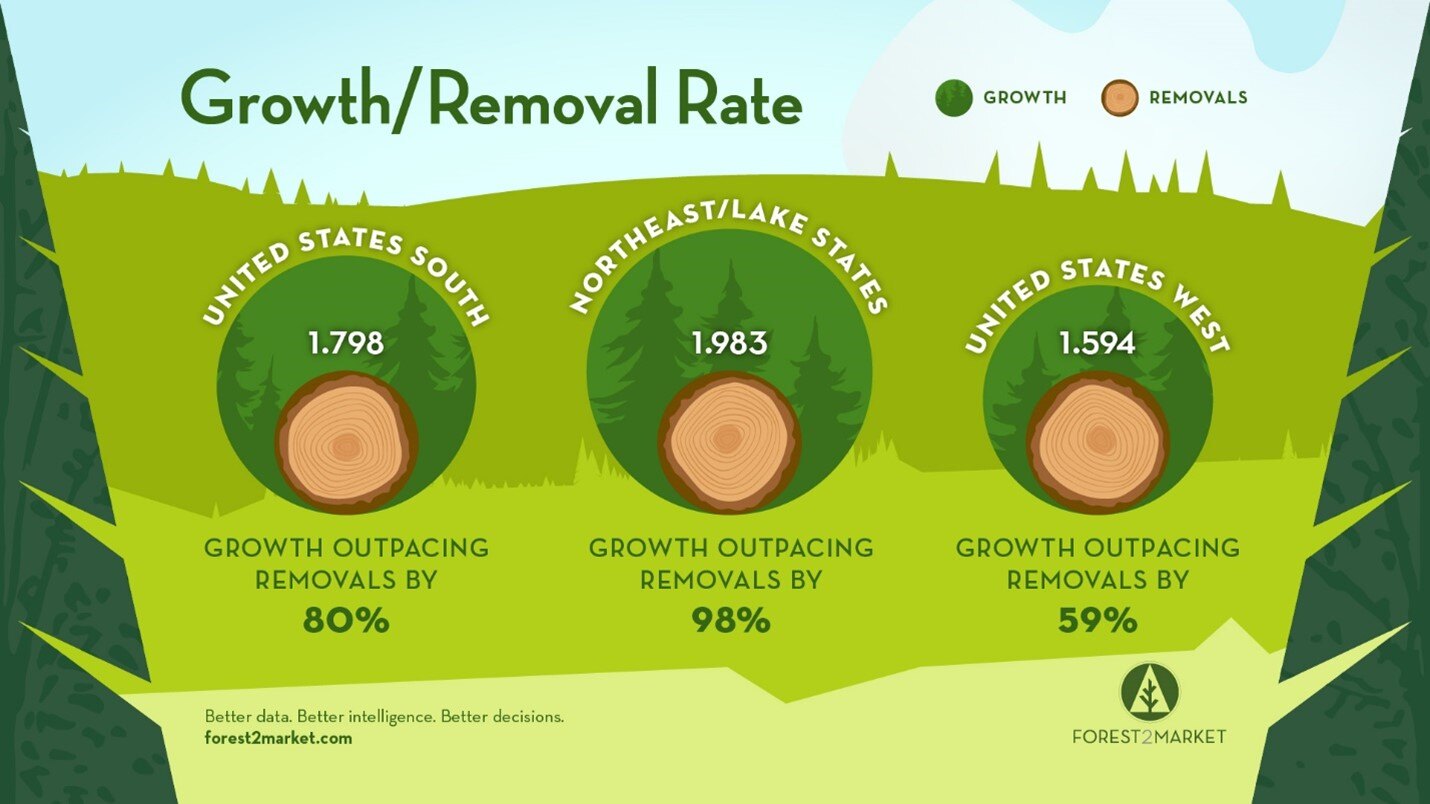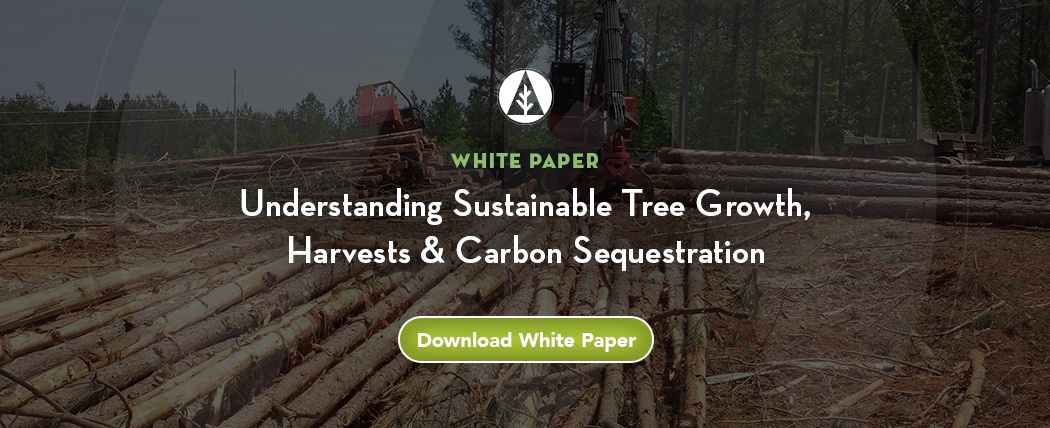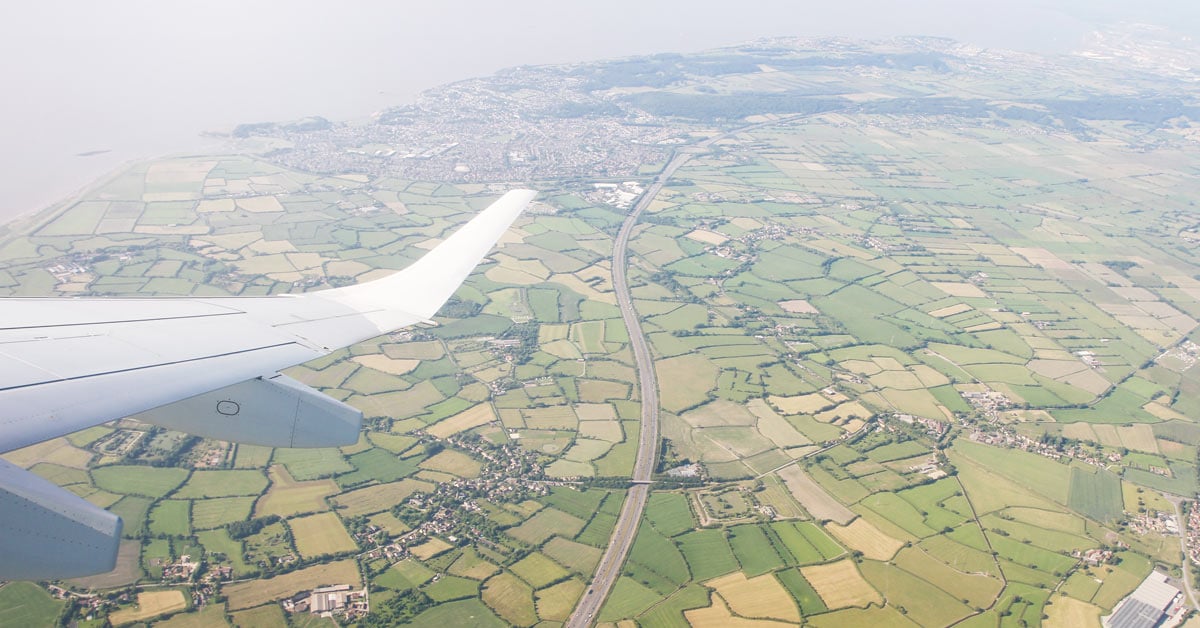4 min read
Understanding Forest Inventory & the Importance of Working Forests
John Greene
:
Mar 31, 2022 12:00:00 AM

The broad topic of climate change is now top-of-mind across the legislative, corporate and consumer landscapes. While all channels continue to develop viable and innovative methods to mitigate the risks of climate change, forests are quietly doing much of the heavy lifting in the background. In fact, forest ecosystems make up the largest terrestrial carbon sink on Earth.
In the US alone, there are approximately 1.4 trillion live trees across all age/size classes on more than 635 million acres of forestland in the continental US that store an estimated 71,808 million metric tons (MMT) of carbon dioxide (CO2). Across the US, forests, urban trees, and harvested wood products remove 14% of all CO2 emissions and store the equivalent of 33 years of all CO2 emissions produced across the country.
Contrary to what is oftentimes promoted in popular media, America’s working forests are not being destroyed, abused or “deforested” beyond repair. According to the USDA, from 1953 to 2011, in a time of expanding population and increasing demand for solid wood products, paper products, and energy, the total volume of trees grown across the US increased by 50%. Due to innovations in silvicultural management techniques, today, private forest owners are growing 43% more wood than they remove from their timberlands.
More Growing Trees = More Sequestered Carbon
How do we know America’s forests are not being permanently destroyed?
The most precise method to gauge the balance of tree growth and removals is to analyze the growth-to-removal ratio (GRR), which reflects the interplay between these two metrics in a given area. As an indicator of the trajectory of available supply over time (not a snapshot of availability at a moment in time), a GRR calculation quantifies overall forest sustainability.
A value of 1.0 suggests growth and removals are in balance; a value greater than 1.0 means forest inventory growth is outpacing removals (greater sustainability), and a value lower than 1.0 means removals are outpacing growth (lower sustainability). For example, a GRR of 1.33 means that growth is outpacing removals by 33%, whereas a GRR of 0.95 means that removals are outpacing growth by 5%. Adjusting for land-use changes, studies have shown GRR in a region tends to be cyclical over long periods of time as market forces react to high or low ratios that then move back toward equilibrium. Per the most recent data via the USFS, America’s forested regions have an excess of available supply.
- US South: 1.798 (tree growth is outpacing removals by 80%)
- Northeast/Lake States: 1.983 (tree growth is outpacing removals by 98%)
- US West: 1.594 (tree growth is outpacing removals by 59%)

Taking the analysis a step further, distinguishing total forest inventory from commercially-available inventory is critical for accurately understanding current and future supply vs. unavailable timber in a specific basin. Throughout the US, millions of acres of forest are off-limits to tree harvesting; insights into the volume of commercially-available timber are gained through the analysis of forest inventory (supply) and the percentage of harvests (removals).
Consider, for example, an analysis of total forest inventory in a distinct region—the Western US—using Forest2Market’s interactive tool Timber Supply Analysis 360, which provides fast, streamlined access to Forest Inventory and Analysis (FIA) data. Though each forested region of the US has millions of timberland acres and robust forest industries, the available inventory in the West is quite different from the available inventory in other regions due to distinct ownership and forest management structures.

The graph below shows that a large chunk of the West’s timber volume—totaling over 393 billion cubic feet on both private and publicly-owned land—is between 60-120 years old. (It’s important to keep in mind that these numbers represent all inventories of all species, not just those that are accessible to the commercial market, which will represent only a sliver of the total inventory.)

Based on this information, one might conclude that an abundant available supply exists for the forest products industry in the region. But a deeper dive into the data illustrates an ownership dynamic that tells a different story.

While total inventory on privately-owned timberland is significant at over 97 billion cubic feet, it pales in comparison to the inventory on national forest and other state/federal lands. Some harvest activity does take place on these lands, but a vast majority of the West’s merchantable timber is harvested from private land.
How much of this potential supply is realistically available to the market? A look at the removal data helps us drill down even further. Of the roughly 2.7 billion cubic feet of timber that is annually harvested on western timberlands, a vast majority—2.1 billion cubic feet, or 78%—is on privately-owned land. These harvests represents 0.5% of total inventory in the Western US.

Further investigation into removals of the most popular commercially valuable species helps us understand how inventory may change over time in the Western US. Analyzing GRR for Douglas fir, True fir and Western hemlock in the region, we see strong, steady demand for all of these species. However, growth for all species is outpacing removals.

This deep knowledge of regional forest inventory provides a reliable foundation to better interpret trends in relation to the larger market. The data suggest that while the three log species noted above are in high demand, a vast majority of removals occur on private land that is being sustainably managed and will most often be replanted with new seedlings, which restarts the cyclical process of tree growth and harvesting.
For timberland owners who have made the long-term investments necessary to significantly improve forest productivity and increase inventory on a stable land base, the forest products industry provides valuable outlets for their timber resources. In a dynamic economy, these outlets are imperative to ensuring the long-term viability of managed timberland. The result is an environmental/industrial relationship that produces valuable products that we have all come to depend upon, while also increasing tree volume in the forest.
An increase in forest stocking levels is the ultimate environmental benefit, which naturally occurs when landowners manage their timber resources for economic purposes. It is this symbiotic relationship that, most importantly, incents timberland owners to keep forestlands forested and invest in advanced timber management practices, which provides both economic benefits to the timberland owner and environmental benefits to all of us.





